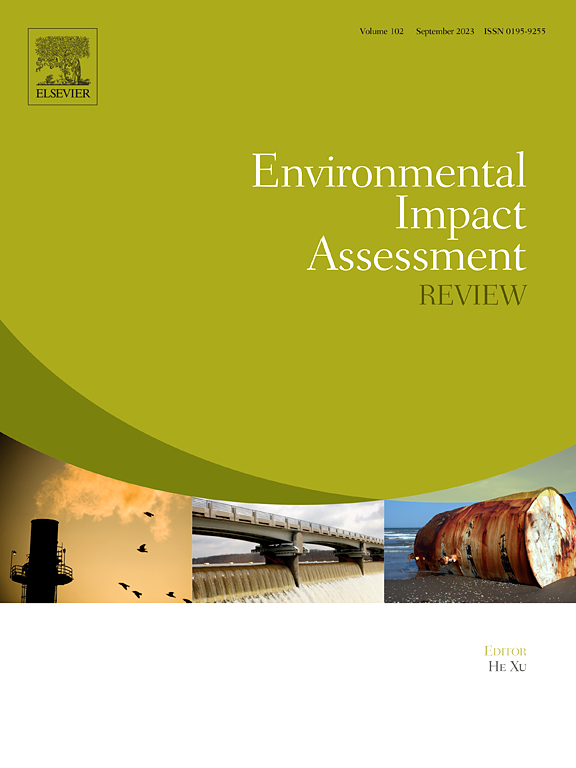基于学习理论的生活实验室学习框架
IF 9.8
1区 社会学
Q1 ENVIRONMENTAL STUDIES
引用次数: 0
摘要
可持续的土地和水资源管理等复杂问题需要跨学科的合作方法,如生活实验室,在科学、政策和社会之间架起桥梁。生活实验室促进了来自公共和私营部门、研究机构和民间社会的不同参与者之间的积极合作,创造了一个促进创新的环境,以应对环境挑战。然而,这些实验室的影响往往只根据其直接结果进行评估,忽略了共同创造活动中学习的潜在影响。因此,本文开发了一个框架,可以捕捉生活实验室共同创造环境中的学习情况。为了响应为生活实验室提供认识论基础的广泛呼吁,本研究以相关学习理论为基础建立了这一框架。首先,我们回顾了与活实验室特点相关的学习理论文献。相关理论包括:行为主义、认知主义、建构主义、实验主义、情境主义、社会主义、组织主义、变革主义和联结主义。接下来,利用对学习理论的见解,制定了一个生活实验室学习框架,其中包含三个相互影响的组成部分:A.学习类型(什么),B.学习过程(如何),C.学习水平(谁),对学习成果做出贡献。该框架将内容、能力和网络划分为学习类型;将有意或偶然划分为学习过程;将个人、团队和组织划分为学习层次。最后,强调了该框架在活实验室的启动、实施和评估项目阶段的潜在应用。该框架为评估学习及其成果提供了一种系统方法,并为今后改进活实验室学习环境的配置提供了启示,从而有望扩大活实验室的影响,使其超越直接结果。本文章由计算机程序翻译,如有差异,请以英文原文为准。
A living lab learning framework rooted in learning theories
Complex issues like sustainable land and water management demand a transdisciplinary and collaborative approach, such as that of living labs, bridging between science, policy, and society. Living labs facilitate active collaboration among diverse actors from public and private sectors, research institutes, and civil society, creating an environment that fosters innovations to address environmental challenges. However, the impact of these labs is often assessed based only on their immediate results, overlooking the potential effects of learning during co-creation activities. Thus, this paper develops a framework that allows to capture learning in a living lab co-creative environment. In response to widespread calls for an epistemological basis for living labs, the study bases the framework on relevant learning theories. First, the literature dealing with learning theories relevant to the characteristics of living labs is reviewed. The relevant theories are identified as: behaviorism, cognitivism, constructivism, experimental, situated, social, organizational, transformative, and connectivism. Next, the insights on learning theories are used in developing a Living Lab Learning Framework with three interacting components: A. Learning types (what), B. Learning process (how), and C. Learning levels (who), contributing to learning outcomes. The framework distinguishes content, capacity, and network as learning types; intentional or incidental as learning processes; and individual, team, and organization as learning levels. Finally, the potential application of the framework during the initiation, implementation, and evaluation project phases of living labs is highlighted. The framework is envisaged to extend the impacts of living labs beyond immediate results by providing a systematic method for assessing learning and its outcomes and generating insights regarding future improvements in the configuration of living lab learning environments.
求助全文
通过发布文献求助,成功后即可免费获取论文全文。
去求助
来源期刊

Environmental Impact Assessment Review
ENVIRONMENTAL STUDIES-
CiteScore
12.60
自引率
10.10%
发文量
200
审稿时长
33 days
期刊介绍:
Environmental Impact Assessment Review is an interdisciplinary journal that serves a global audience of practitioners, policymakers, and academics involved in assessing the environmental impact of policies, projects, processes, and products. The journal focuses on innovative theory and practice in environmental impact assessment (EIA). Papers are expected to present innovative ideas, be topical, and coherent. The journal emphasizes concepts, methods, techniques, approaches, and systems related to EIA theory and practice.
 求助内容:
求助内容: 应助结果提醒方式:
应助结果提醒方式:


